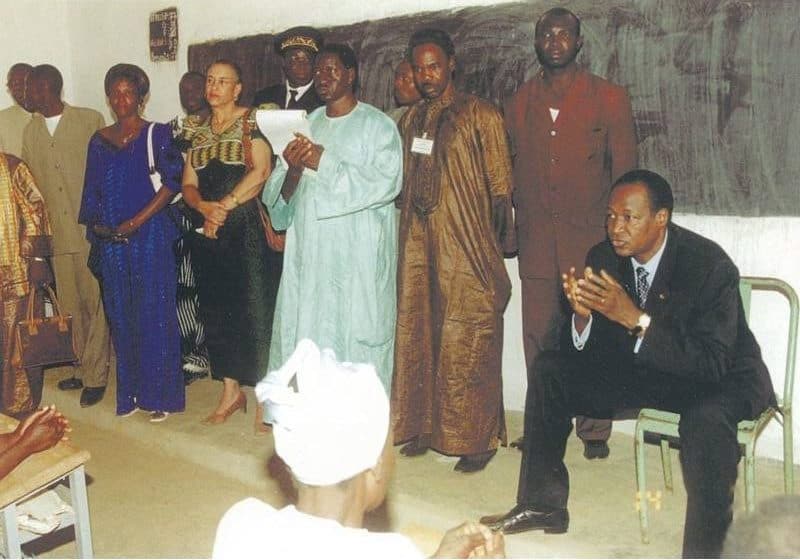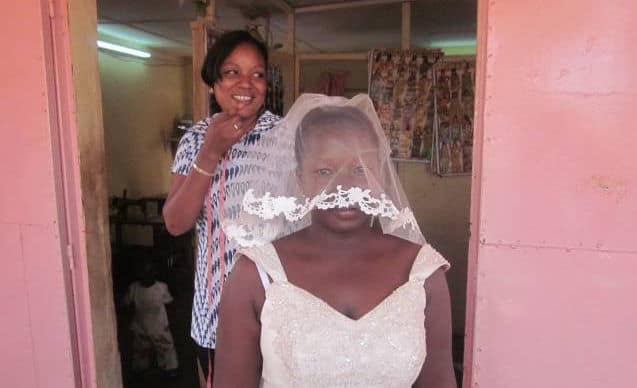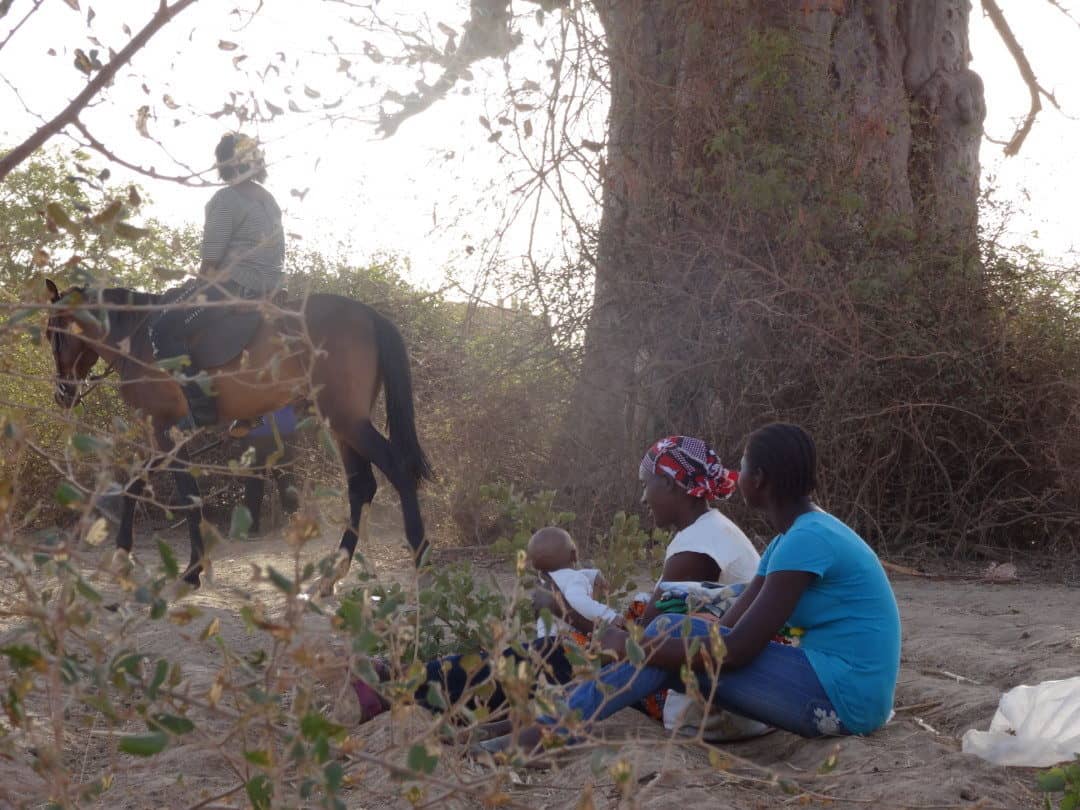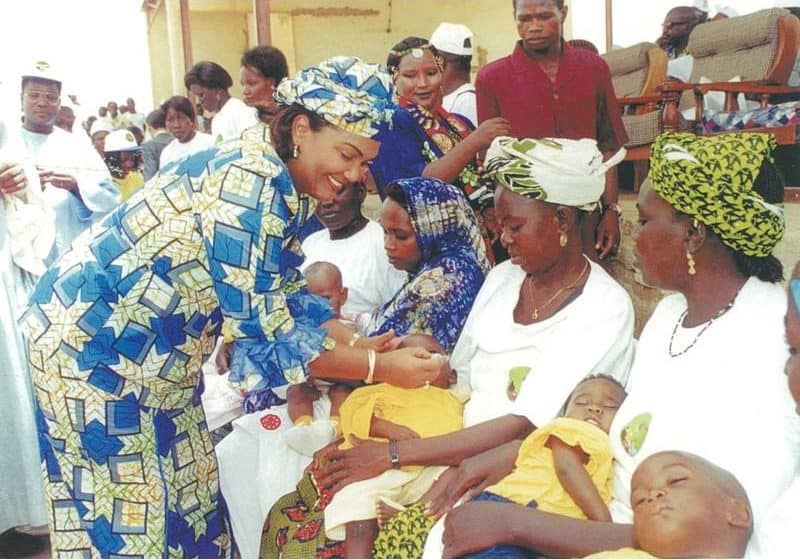Compaoré’s Scorecard
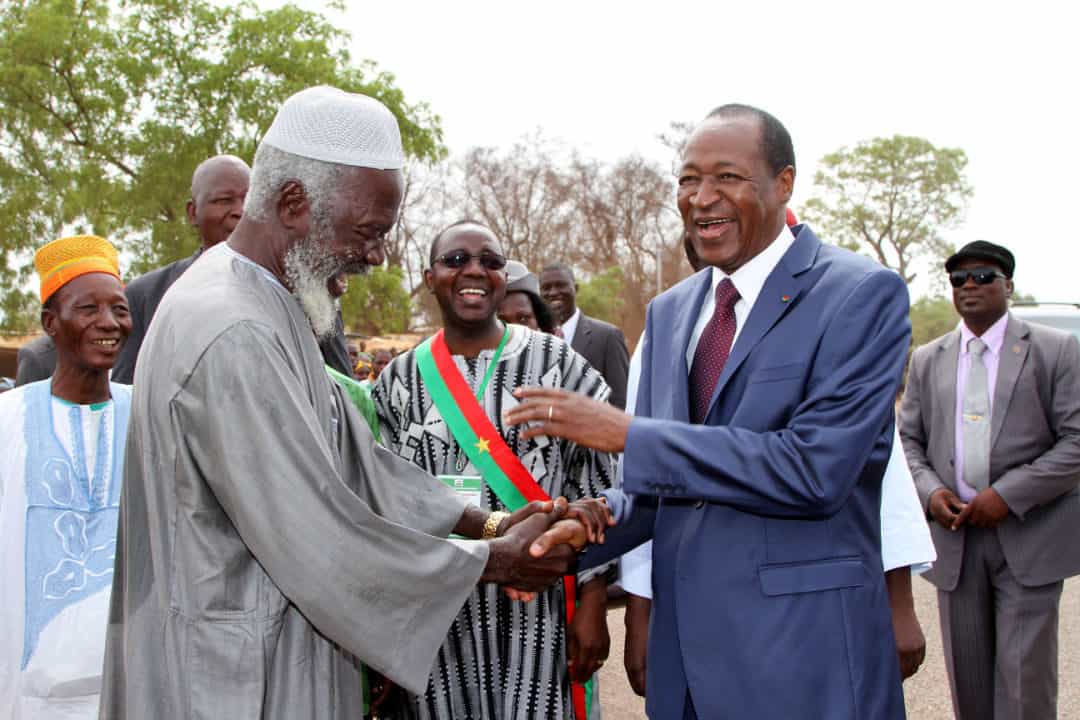
Defender of dialogue and inclusive decision-making, here with Boukary Kaboré, a former strong adversary, Dec. 2012
As a conflict mediator, Compaoré has a hard-won reputation for being a good listener both at home and abroad. Compaoré’s policies reflect concertation and inclusive decision-making as a philosophy of governance. It not only built and preserved social peace but it also enabled to implement policies effectively in the field, earning him international recognition for these achievements: Wikileaks (225).
Although Burkina Faso still ranked 181 of 187 on the U.N. Development Program’s 2014 human development index (226), there has been undeniable progress on a range of health, water and education indicators during the last decade. The government has introduced an aggressive strategy to strengthen these sectors and has achieved results: MDG Progress Index Scorecard – 2010 Burkina Faso (227).
In 2010, Burkina Faso ranked as Africa’s N°1 leader on track to achieve the U.N. Millennium Development Goals (MDGs) and among the Top 15 in the developing world according to MDG Progress Index – 2010 Burkina Faso.
Water access for All
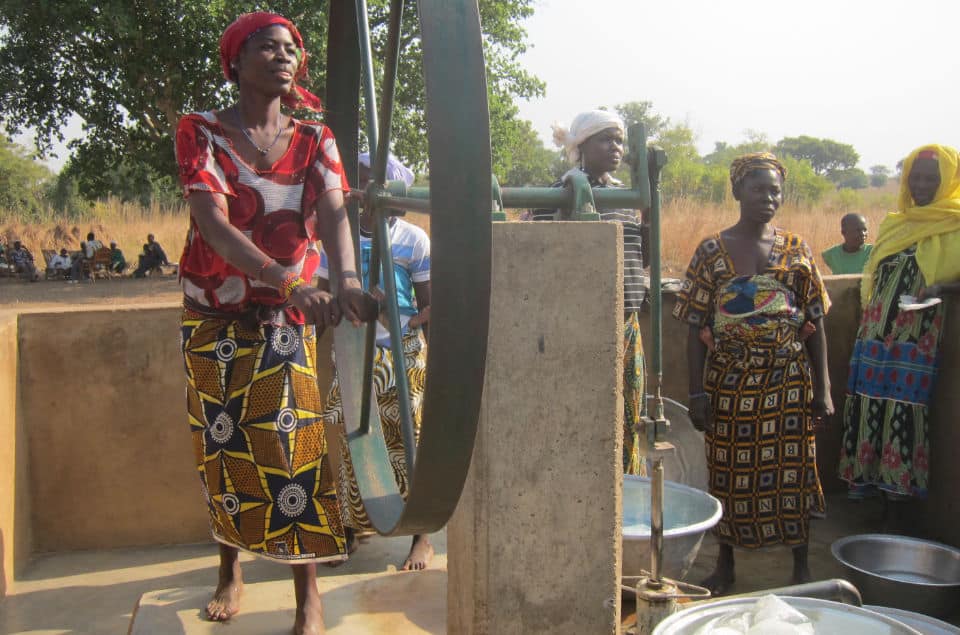
In 2008, 72 % of the rural population had water access, largely exceeding the UN MDG target previewed for 2015.
In spite of water-scarcity and being one the world’s poorest countries, government and donor agencies alike consider urban water supply in Burkina Faso one of the rare development success stories in Sub-Saharan Africa (229).
Access to an improved water source in urban areas increased from 73 % in 1990 to 95 % in 2008. And in rural areas 72 % of the population had access to water. In 2008, the country was close to meet the MDG target of 82 % previewed for 2015 according to the MDG Progress Index Scorecard – 2010 Burkina Faso (230).
In September 2002, attending the World Summit on Sustainable Development (WSSD), President Compaoré responded to the U.N.’s call upon all countries to work out and implement an “action plan of the integrated water resources management” by the year 2005. Burkina’s plan was adopted in 2003. Being one of the first countries having accomplished this challenge, Burkina Faso entered the leading group of countries that promote sustainable and equitable development and management of water, land and related resources (231).
Water supply that used to be intermittent was continuous since 2010 until his departure (232). The World Bank and USAID considered the national water utility (ONEA) one of the best performing water utilities in Sub-Saharan Africa (233). Major donor partners included the World Bank, the Water and Sanitation Program (WSP) for Africa, the AfDB, the European Union and the governments of Denmark and Germany (234).
On June 16, 2006, President Compaoré laid the first cornerstone of the International Institute for Water and Environmental Engineering, 2iE. Since then, 5,000 young people have been trained in strategical sectors for the development in Africa. It has gained international prestige thanks to its partnerships with universities, companies and other prestigious institutions from 4 continents (235).
Education
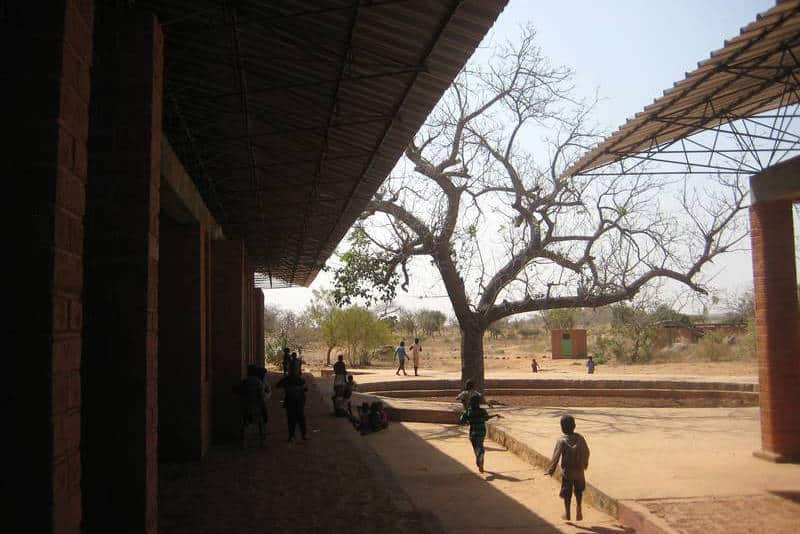
The amount of schools increased by 400 % between 1991-2011 and 86 % of the pupils have school access within 3 km or 1.86 miles
In 1991, well aware of Burkina’s disastrous world ranking on education and school enrollment ratios, Compaoré’s administration together with civil society and donor partners engaged in improving education (236). He focused on schools in rural areas where more than 80 % of the population are living (237).
In 2012, there are 11, 545 schools compared to 2,486 in 1991 and 86 % of the pupils have school access within 3 km or 1.86 miles (238).
In 2007, the government eliminated school fees, paving the way for much greater participation. At the same time, it zealously recruited more qualified teachers, strengthened teacher training and made more school books available. In 2014, the country was on track for universal primary education with enrollment figures leaping to 92.8 % in 2012-2013 from a dismal 38.6 % in 2000 -2001 (239).
2000 | 2011 | |
Urban Primary Schools | 1,208 schools | 2,041 schools |
Rural Primary Schools | 3,923 schools | 9,504 schools |
In 2013, the Compaoré administration focused on secondary school growth and development. In 2014, enrollment in secondary schools quadrupled since 2000 (240). The number of girls attending public and private secondary schools nearly tripled between 2005 and 2012 and the number of boys had doubled (241). MDG Progress Index Scorecard – 2010 Burkina Faso.
Meanwhile, more support could have been given to vocational education to struggle against youth employment. Only 4 % of all students are in vocational education. The National Technical Training and Skills Program provided professional training to 4,000 youth in 2013. Technical education institutions account for 8% of all secondary schools and 87 % of technical colleges are private (242).
“There was still much work ahead to improve the country’s higher education in 2014”
Taking into account the improvements made in primary and secondary education during the Compaoré-era, it looks as if the universities had played a minor role in his education program.
Only the International Engineering Institute, 2iE – the private sector institute for hydraulic and environment engineering, is the only internationally renowned African engineering institute (243) – and the CERBA Research Centre – a reference in West Africa for research on Molecular Biology and Applied Genetics (244) – enjoy international recognition but this certainly is not the case for all the other higher education institutes.
The National Program for Higher Education (2014-2024) benefitted of a financial commitment of $2 billion
Although the number of students attending universities and higher education in Burkina Faso -male and female- doubled in recent years, there was still much work ahead to improve the country’s higher education in 2014.
There were 74,276 students at University and higher education level, in 2012-2013. In 2014, there were 179 University and Higher Education Institutes operating in Burkina Faso (245). The implementation of a National Action Plan to Develop Higher Education (PNADES 2014-2023) was initiated in 2014 with a financial commitment of 2 billion $US over the next decade (246).
Furthermore, by the end of 2014 Africa’s biggest optical telescope was to be installed on the mount Djaogari ( 1 506 feet or 459 m), near Dori (North) to serve astrophysics research at the University of Ouagadougou and worldwide. In addition, this important initiative was to boost the University’s educational and research departments. However, its completion has been jeopardized by the frequent terrorist and other armed group attacks in the region since Compaoré’s departure.
In 2014, another challenge for Compaoré in the field of education was to increase the availability of electricity for schools thanks to the National Electrification Program that launched public works in 2013. Only 12.9 % of primary schools were electrified in 2011 (247).
Healthcare
HIV/AIDS from 7% down to 1%: Since its creation in 2001, President Compaoré, head of the National Council on Aids and Sexually Transmitted Diseases (CNLS-IST), was genuinely involved and presided the meetings with all the members engaged in the fight against these diseases (248).
In June 2005, the CNLS-IST adopted a new Strategic Program for 2006-2010 totaling an investment of 277 million $US in addition to the 135 million $US already invested by the previous Strategic Program 2001-2005 (249). At the time of the departure of President Compaoré, coinciding almost with the end of the implementation of the Strategic Program 2011-2015, more than 600 million $US were invested by the CNLS-IST through these three successive programs.
Under Compaoré’s presidency, the country dramatically exceeded the Millennium Development Goal N°6 to halt and begin to reverse the spread of HIV/AIDS by 2015. Prevalence of HIV/AIDS that reached 7.2 % in 1997, fell to 2 % in 2006, reaching 1.2 % in 2012 and down to 1 % in 2013 (250).
In 2013, 87.14 % of the people living with HIV were receiving antiretrovirals (ARVs). This represents about 150,000 people (251).
A lot of effort has been made on creating effective awareness campaigns. In 2002, Compaoré himself also participated in an anti-AIDS poster awareness campaign with the slogan (252) :
“ HIV-AIDS: It concerns me … And what about you? ”
Contraception tripled: The use of contraceptive methods had tripled (253). In 2000, only 10.7 % of the sexual active population were using contraceptive methods. Regular birth control awareness campaigns and HIV/AIDS campaigns aimed at women, men and religious leaders resulted in an increase of the use of contraceptives up to 29.4 % in 2012 (254).
Breast cancer awareness campaigns: At the Universities of Ouagadougou, breast and cervical cancer awareness campaigns with breast self-exams (BSE) were launched at regular intervals (255). During March 2014, 2,000 students were checked compared to 1,000 students in 2012 when 12 cases of an early stage of cervical cancer and 140 cases of sexually transmitted diseases (STD) had been identified. All these young women that have been tested positive, have received direct treatment and have been taken care of free of charge.
Maternal mortality cut by 60%: Government funding has been directed particularly towards reducing excess deaths of girls and young women through investments in clean water, sanitation and maternal health services (256). Subsidies for childbirth and obstetrics services, free prenatal counseling and important investments to improve healthcare cut maternal mortality by 30 % between 2005 and 2014 and by 60 % between 1990 and 2014 (18).
Burkina Faso still ranked 181 of 187 on the U.N. Development Program’s 2014 human development index in 2014. But during the period 1990 to 2011, the percentage of qualified nurses per inhabitants has risen sharply coming close to the WHO (98.9 % of WHO standards) (257).
This was still not the case for doctors (45.4 % of WHO standards), midwives (39.2 % of WHO standards) and pharmacists (20.3 % of WHO standards) although the situation has also improved (258).
Childbirth assisted by a nurse nearly doubled from 42.9 % in 2005 to 78.3 % in 2011(259). The government budget for emergency obstetric and neonatal care has increased by 2.3 times between 2008 and 2010. Progress has also been made in preventing and eliminating HIV/Aids mother-to-child transmission and keeping mothers alive (261).
Health indicators were steadily improving: The great nationwide vaccination campaigns organized under the presidency of the Head of State and his wife are effective in protecting the populations against diseases such as poliomyelitis and measles. Child mortality under five years old averaged 123 per 1,000 in 1990. Although still very high, it averaged 73 children per 1,000 in 2013, meaning an important improvement. 98 % of children received free vaccination in 2013, in comparison to 44 % in 2004 (262)
2000 | 2011 | |
Doctors | 1 per 45,207 people | 1 per 22,017 people |
Midwives | 1 per 40,525 people | 1 per 12,754 people |
Pharmacists | 1 per 147,362 people | 1 per 72,863 people |
98 % of children received free vaccination in 2013, in comparison to 44 % in 2004
In December 2010, Compaoré launched a vaccination campaign against meningitis A. 12 million children and young adults aged between 1-29 were vaccinated. In 2010, nationwide almost 6,000 people were affected by meningitis (263).
The idea of developing a vaccine to overcome meningitis outbreaks began in 2001 with the creation of the Meningitis Vaccine Project (MVP), a partnership between WHO and PATH. Blaise Compaoré, patron of the new vaccine known as MenAfriVac and financed by the Bill and Melinda Gates Foundation and GAVI Alliance, used his influence to create awareness about the importance of vaccination in other African nations. Burkina Faso was the first country to launch a nationwide campaign which was soon followed by neighboring countries Niger and Mali (264). The campaign marked an important step in the elimination of meningitis A in the sub-region.
